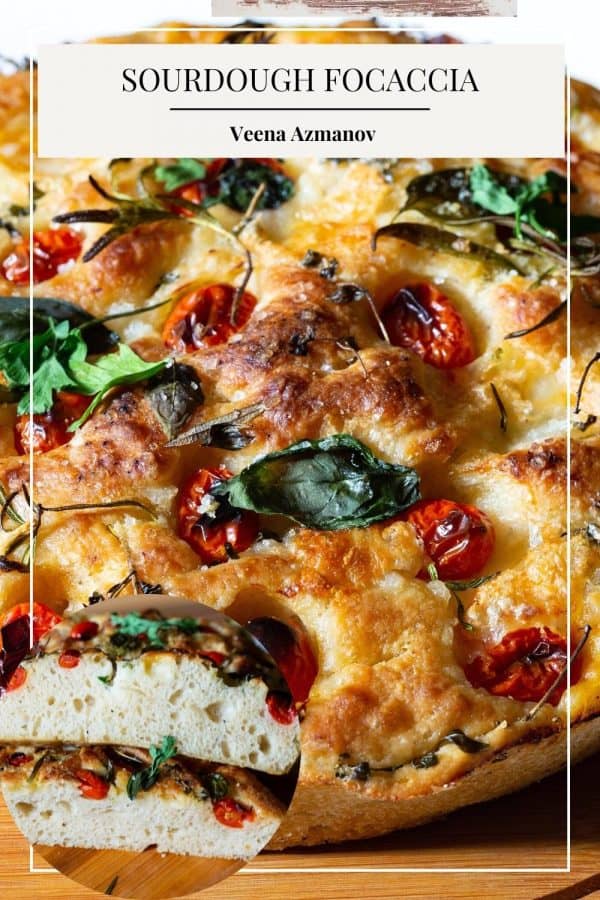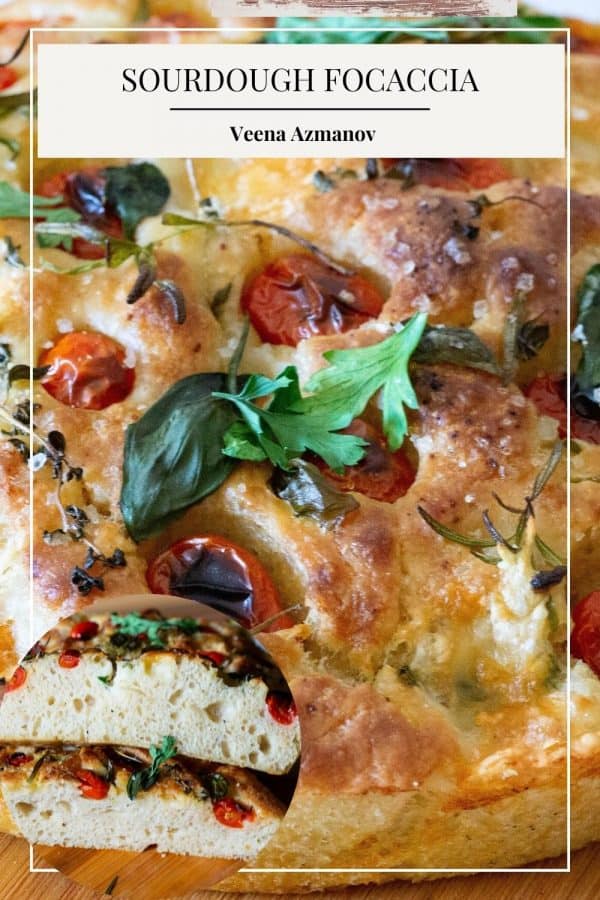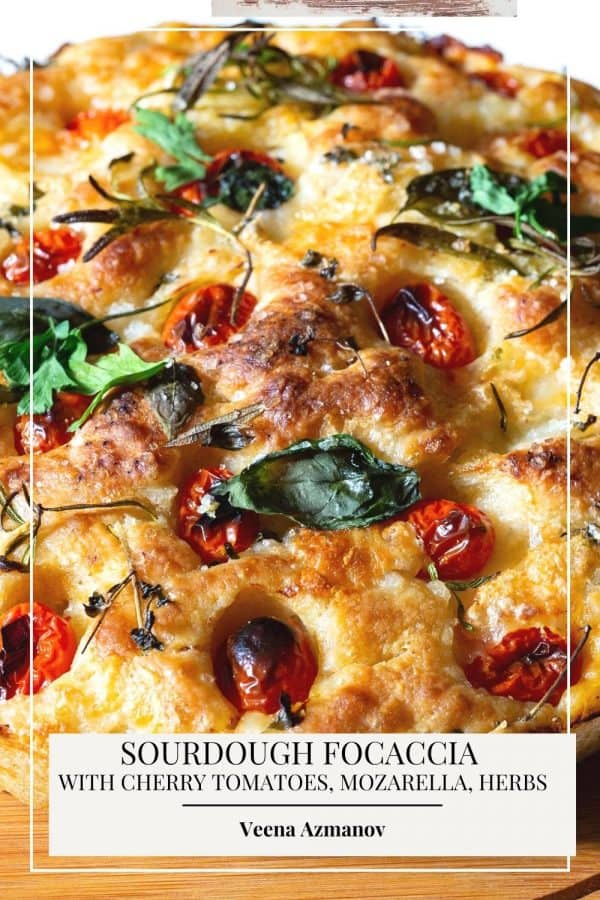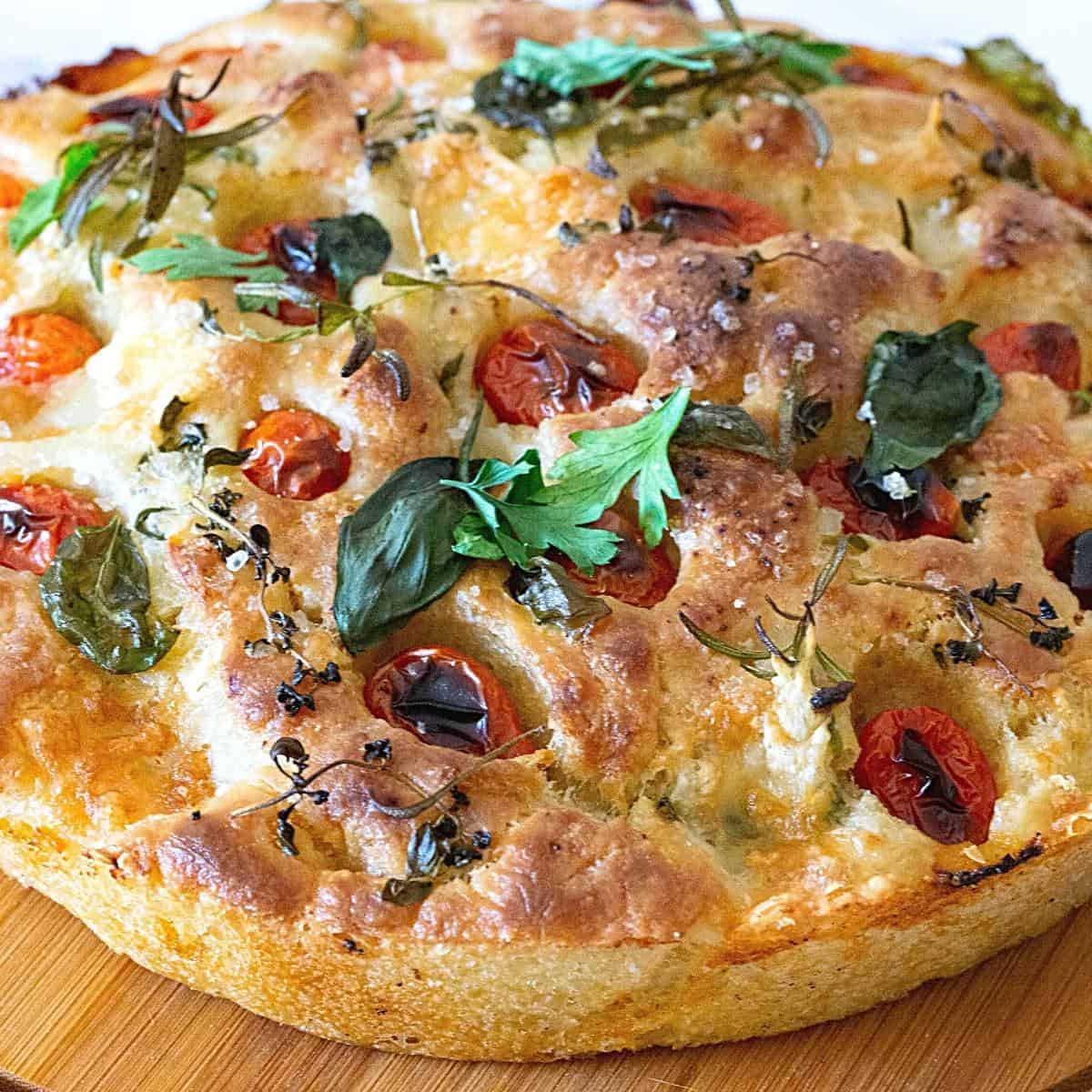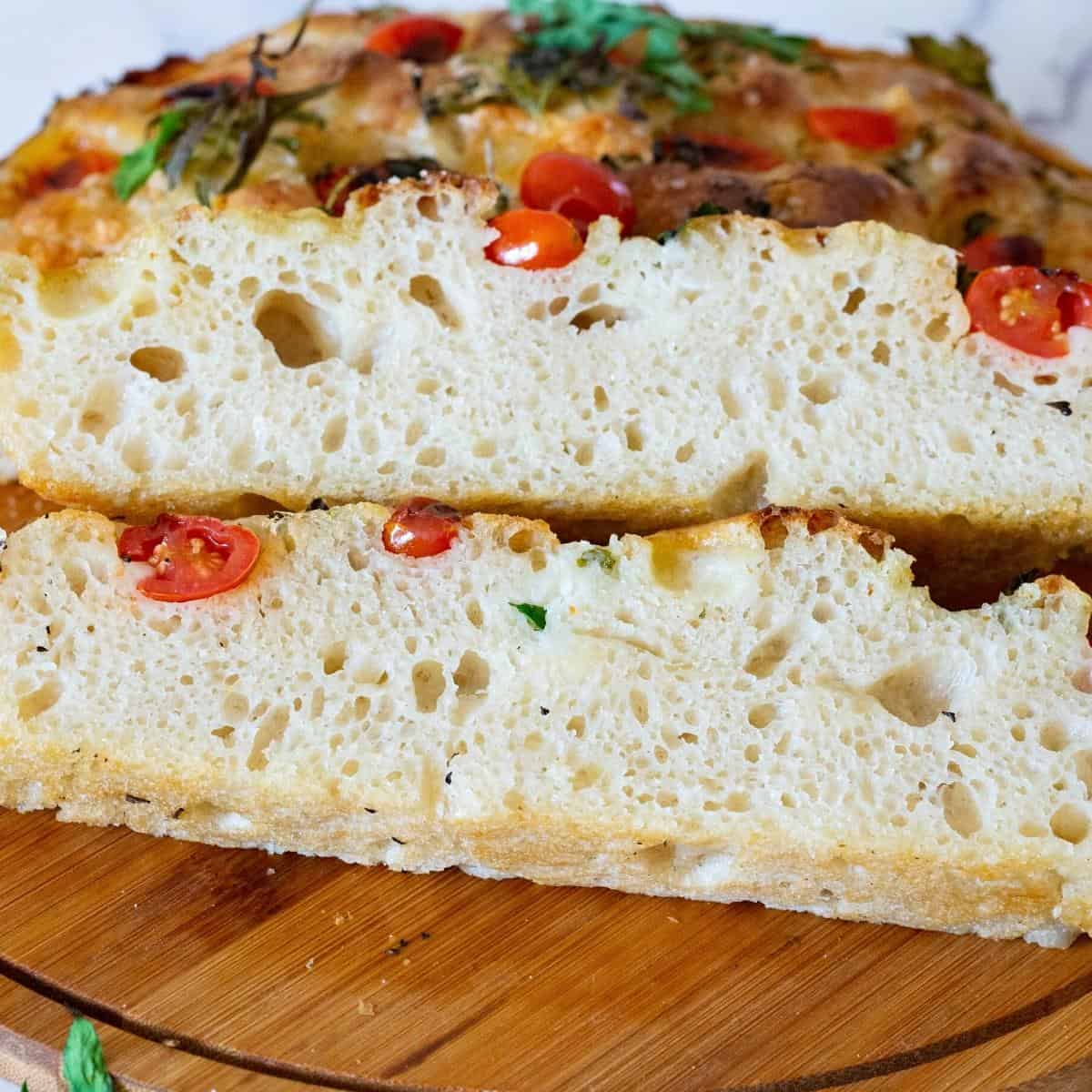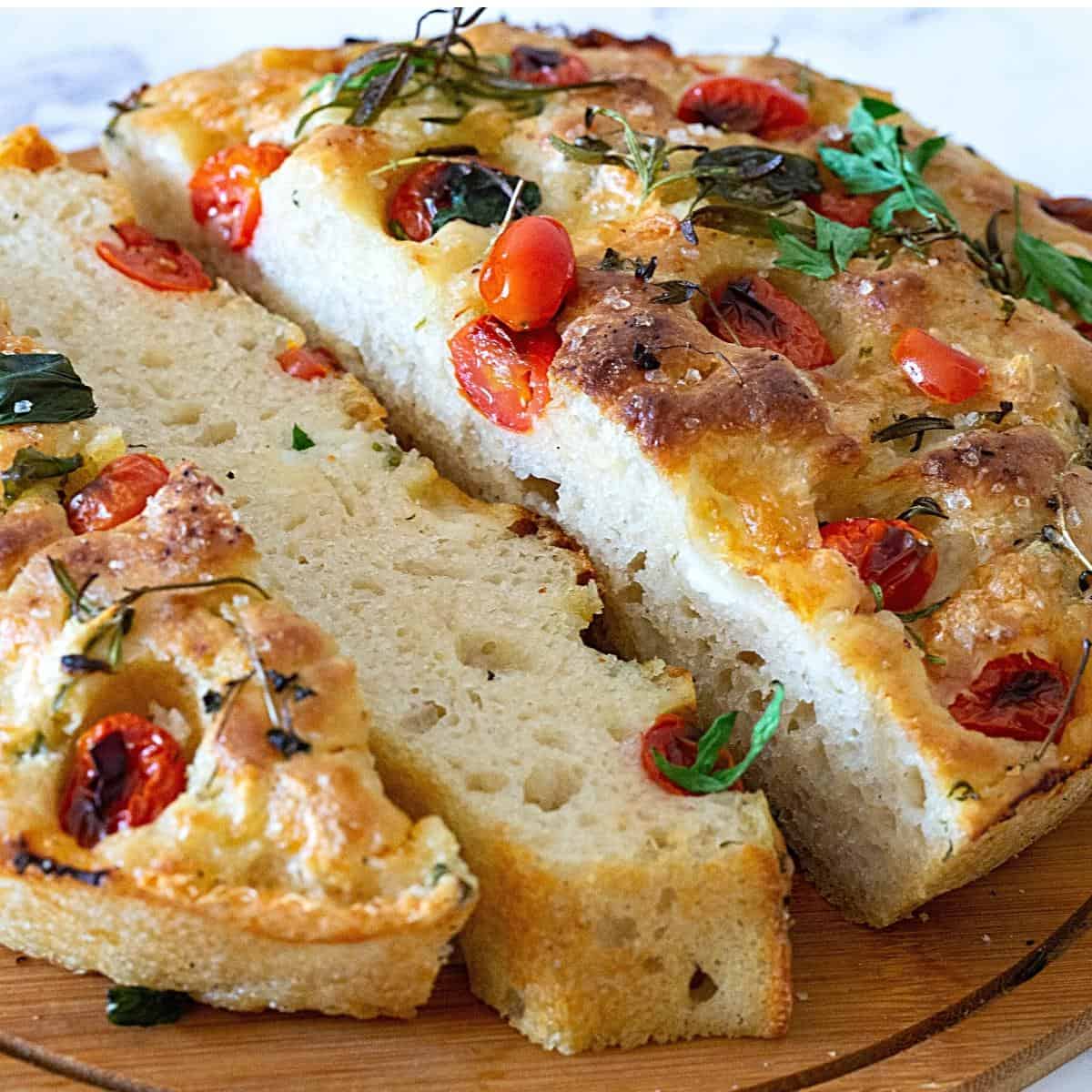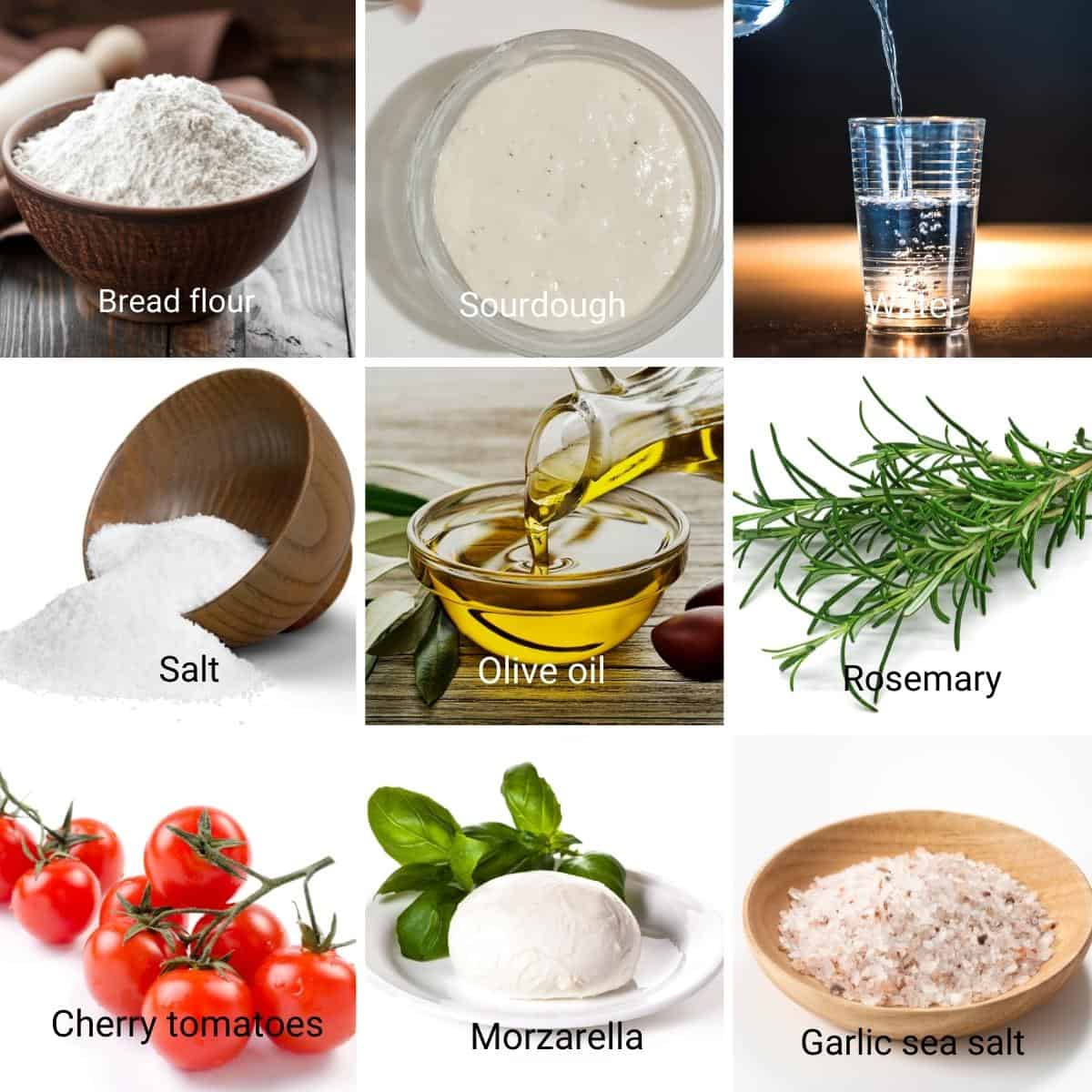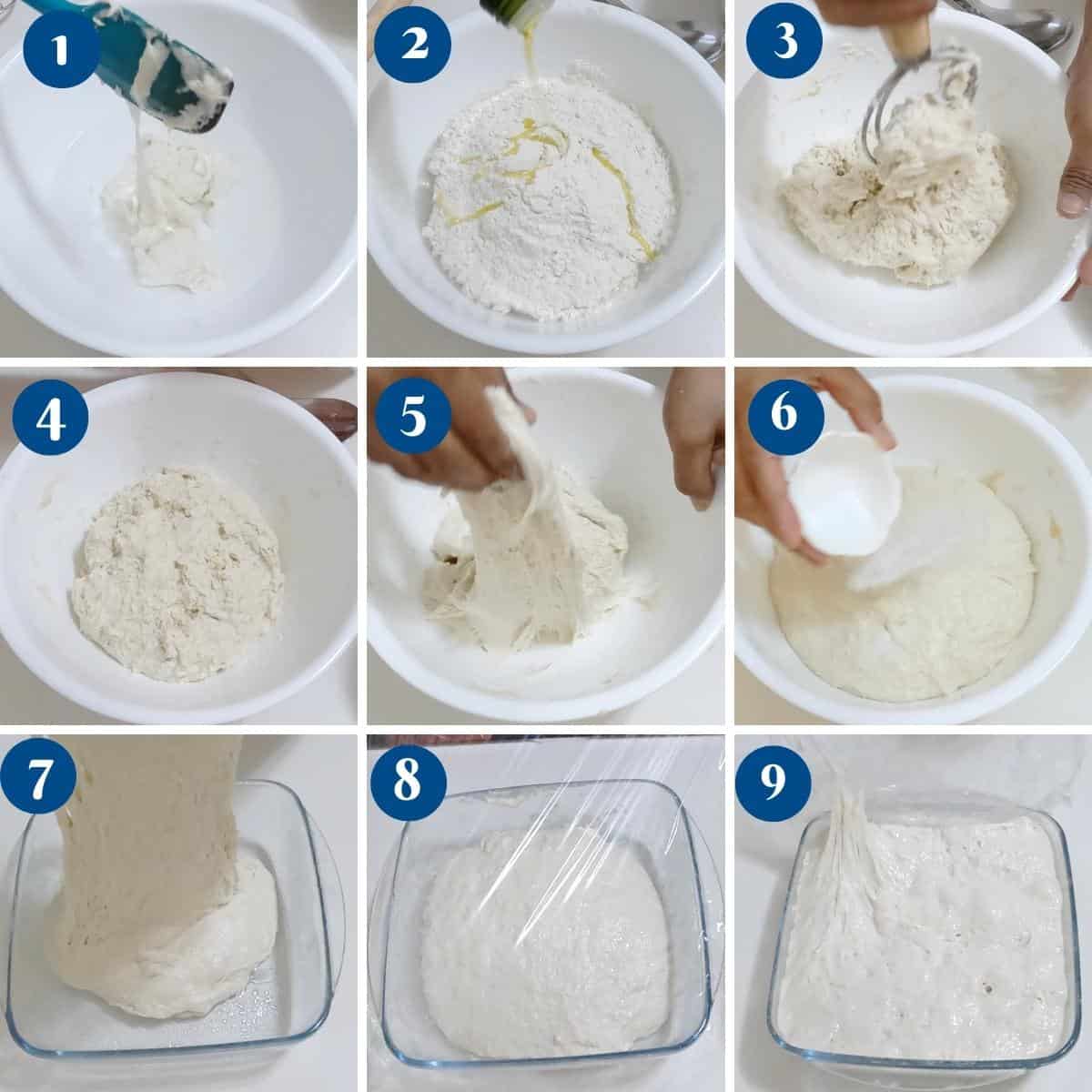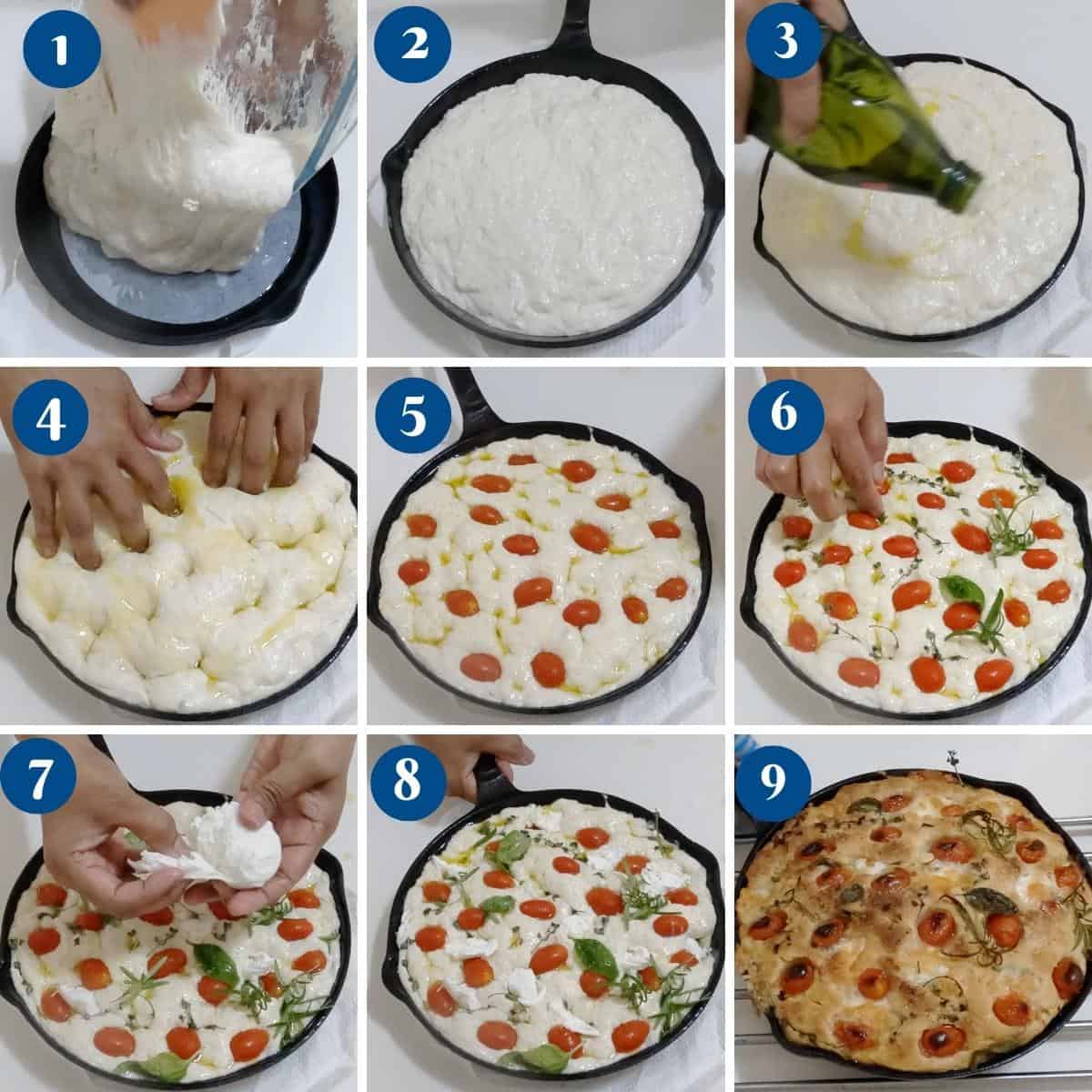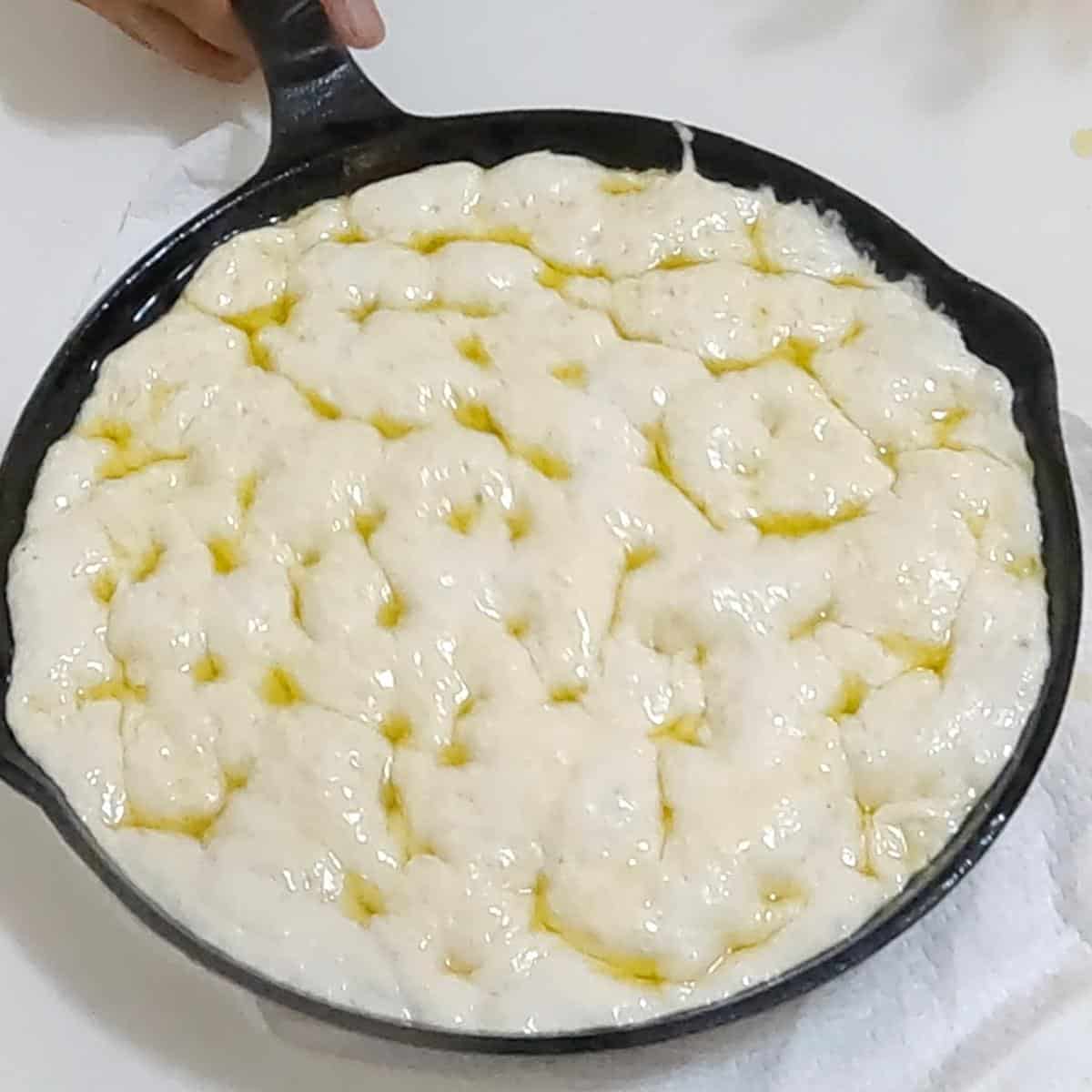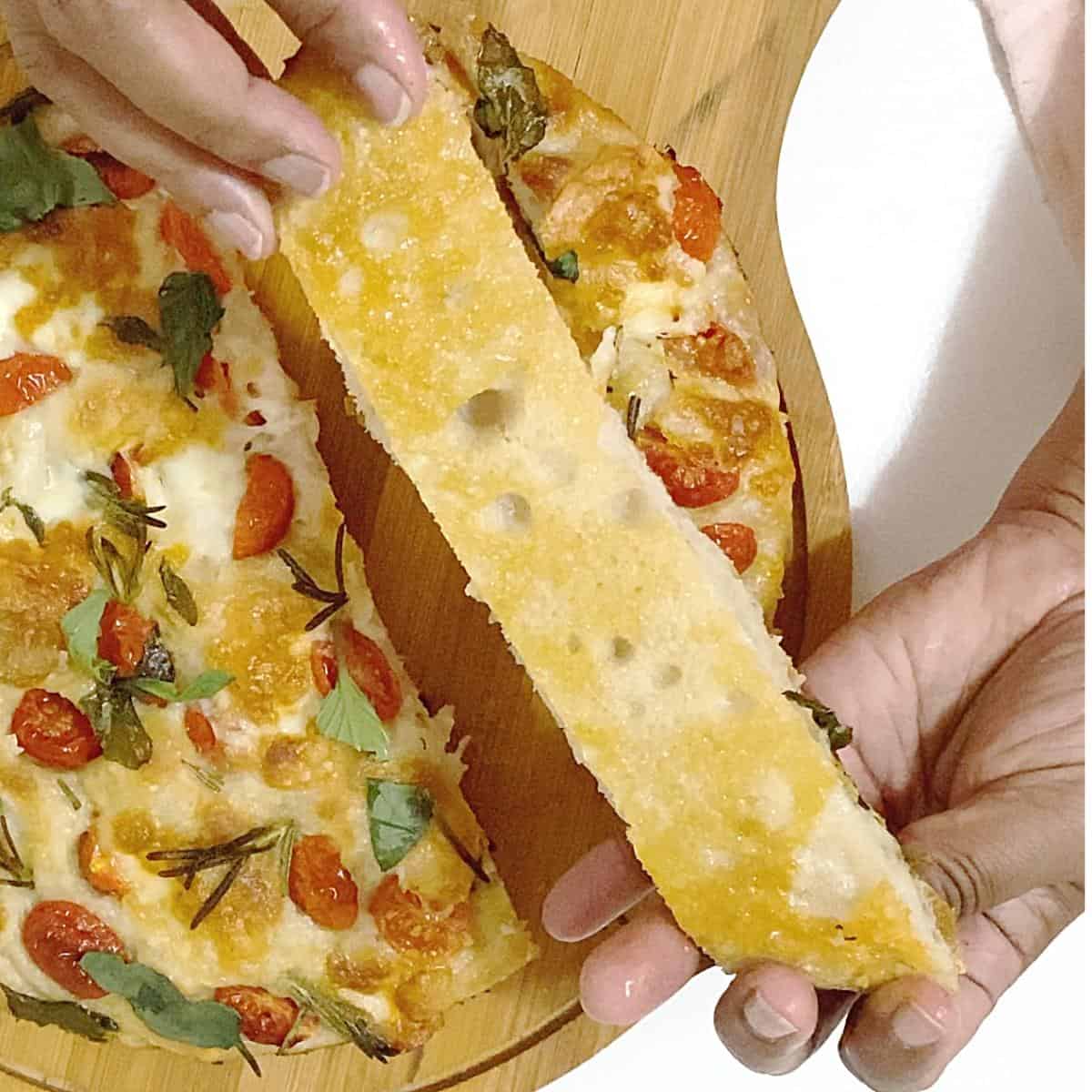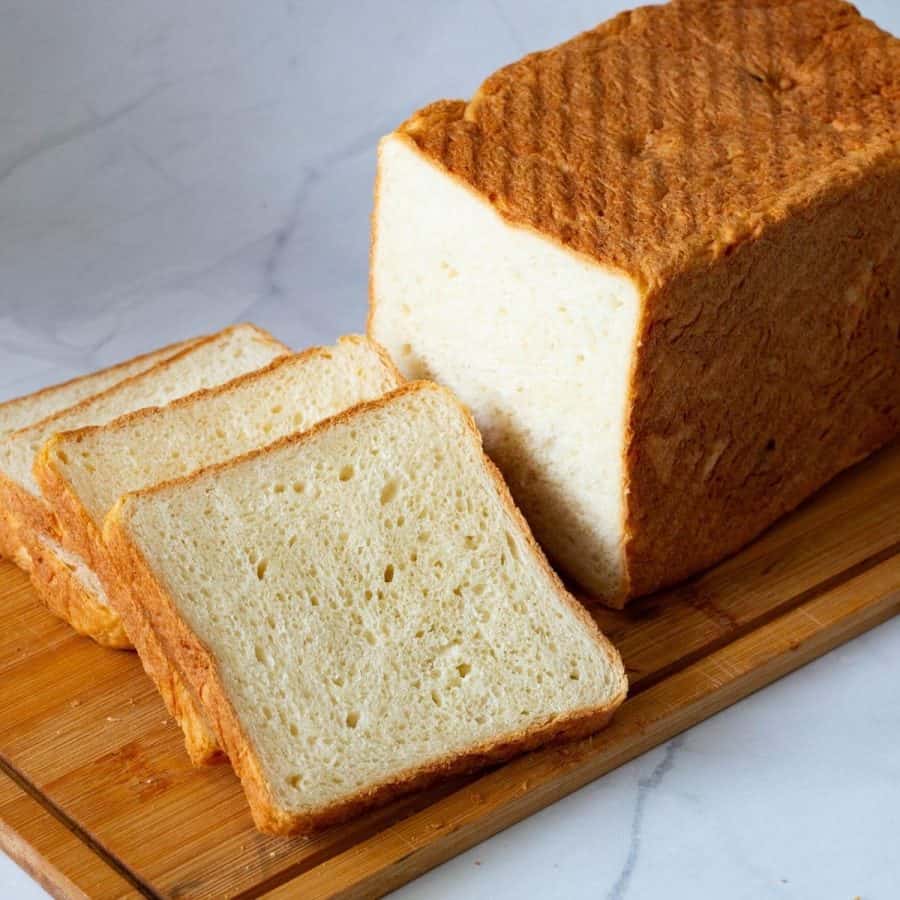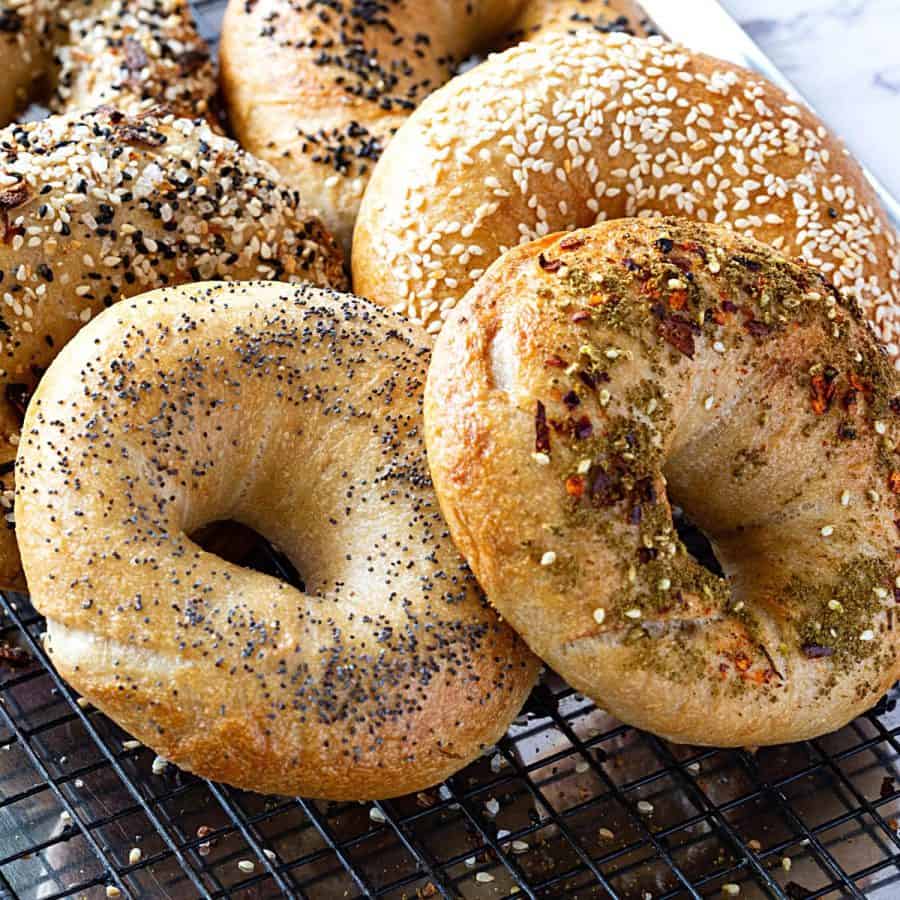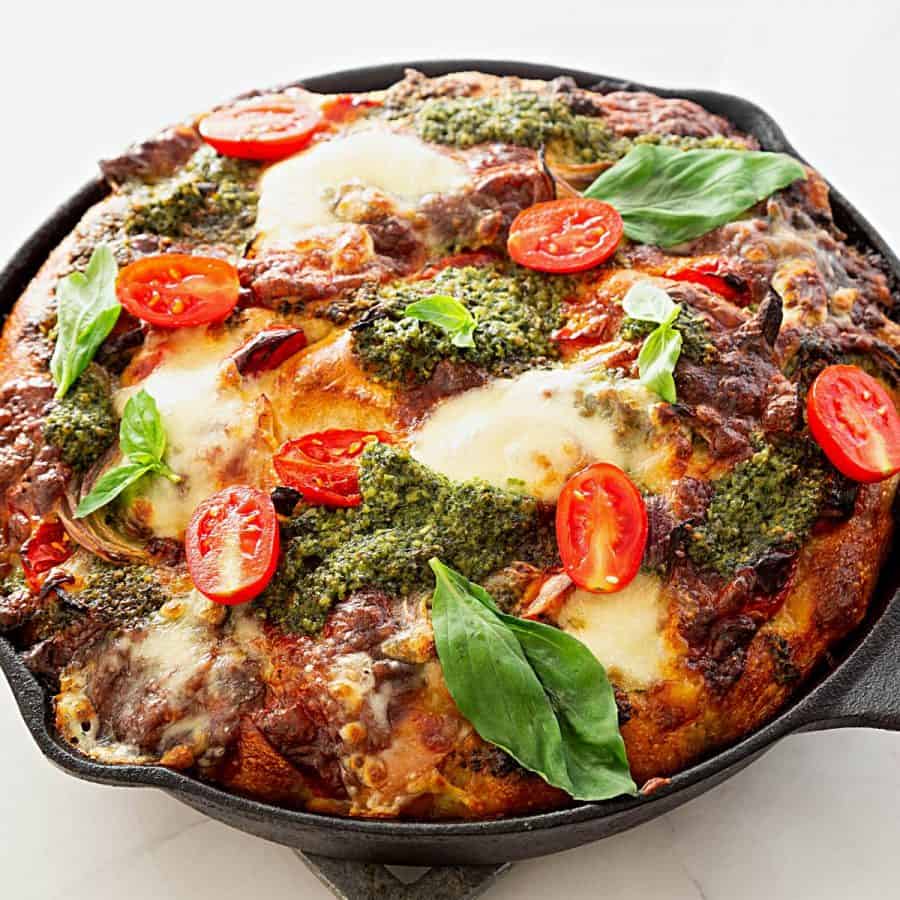Focaccia bread is a beloved Italian classic, known for its light and airy texture, crisp crust, and savory flavor. This versatile bread is often adorned with a variety of toppings, such as olive oil, herbs, sea salt, and sometimes even vegetables or cheese. The dimpled surface of focaccia, created by pressing the dough with your fingertips, not only adds to its rustic appearance but also creates pockets that trap the toppings, infusing the bread with even more flavor. Whether enjoyed on its own, used as a sandwich bread, or served alongside a hearty stew, focaccia is a delightful treat for any bread lover. While you can make focaccia with active yeast, this one needs an active sourdough starter. Using sourdough starter to make focaccia can enhance both the flavor and texture of the bread. The natural fermentation process of sourdough adds depth and complexity to the flavor profile of the focaccia, giving it a slightly tangy taste that complements the olive oil and herbs typically used in the recipe. Additionally, sourdough starter helps create a light and airy texture in focaccia, resulting in a more tender crumb and a crisp crust. The long fermentation process also breaks down gluten and phytic acid, making the bread easier to digest and potentially increasing its nutritional value. Overall, using sourdough starter in focaccia adds a depth of flavor, improves texture, and may offer some health benefits, making it a popular choice for home bakers looking to elevate their bread-making game.
Simple sourdough focaccia bread
Active starter/ Levain – In a medium bowl, combine the sourdough starter, water, and flour. Stir well to combine. Cover and leave to rise for 3 hours at room temperature.Pro tip – You can make the levain for up to 5 days in advance and leave it in the fridge.
Autolyze – In a large bowl, combine the water, levain/starter, olive oil, and flour. Combine well until no dry flour is visible. Cover the bowl and leave it on the counter for an hour.Pro tip – This is a wet dough, so don’t be tempted to add more flour. A loose dough will give an open crumb. Stretch & Fold – after an hour of resting Sprinkle the salt over the dough and knead the dough using a stretch-and-fold method for 2 minutes. Rest for 30 minutes, then stretch and fold one more time. Transfer the dough to a clean oiled bowl.Pro tip – You can use a stand mixer with the dough hook attachment if you prefer. But I usually just stretch and fold the dough a few times in the bowl. Bulk ferment – Cover the bowl and leave the dough to rise in a warm place (24C/74F) on the counter for 5 hours or in the fridge for up to 12 up to 24 hours.Pro tip – Transfering the dough to a clean bowl is optional but it prevents any dry bits that are stuck to the bowl from getting into the proofed dough.
Bake
Shape – Transfer the dough to an 8-inch oiled cast Iron skillet or 9 x 13-inch oiled rectangle baking dish lined with parchment paper. Using the flat of your fingers, gently spread the dough in the pan.Pro tip – This is a high-hydration dough so it will be very loose. Use a flexible bench scraper to work instead of your hands. Proof – Cover the pan with plastic wrap or a clean tea towel. Leave to rise on the counter until it doubles in volume for about 2 to 3 hours.Pro tip – You can also cold-proof in the refrigerator overnight but use a lined baking pan or cast iron pan. Oven – About 30 minutes before baking preheat the oven at 425°F/220°C/ Gas Mark 7
Assemble – Once double in size, create dimples/holes in the dough by poking your fingers into the dough. You can break the big bubbles but leave some to become crisp during baking.Pro tip – Dip your fingers in oil or water to prevent the dough from sticking to them. This will create better holes. Top – Dot the top with cherry tomatoes, mozzarella, rosemary, thyme, basil leaves, and a sprinkle of garlic sea salt. Drizzle the olive oil all over the bread.Pro tip – Moistening the fresh herbs with olive oil will prevent them from burning during baking. Bake – Transfer to the oven and bake for 25 to 30 minutes or until the top is golden brown. When baked, remove from the oven and cool on a cooling rack at least 10 minutes before you cut. Garnish with more fresh basil leaves.
Frequently asked questions
Thank you for sharing - Save for later
